Abstract
Radial haemolysis (RH) was used to test sera for immunity to rubella from 1317 patients attending a general practice. One hundred and forty-one (10.7%) were treated as susceptible and offered an attenuated virus vaccine (RA 27/3). Pre-immunization sera from 43% of these patients were reactive at low levels in RH (less than 15 international units rubella antibody per ml). Pre- (S1) and post- (S2) immunization sera from 66 vaccinees were studied in detail. Antibody was detected by RH, haemagglutination inhibition (HI) and enzyme-linked immunosorbent assay (ELISA), and the specific IgM response was measured by a solid-phase M-antibody capture radioimmunoassay (MACRIA). The vaccine-induced IgM response was only detected if the S1 serum was non-reactive by all tests for rubella antibody. It was weaker than that seen following wild virus infection. It could be detected reliably for six weeks, and in most cases for nine weeks, after immunization. In contrast, patients with S1 specimens reactive by RH, HI or ELISA never showed an IgM response in the S2 specimen despite "significant' antibody rises often being present. It was considered that an IgM response to RA 27/3 was the best indicator of pre-immunization susceptibility to rubella. The failure of many vaccinees to make an IgM response implied that a significant proportion were already immune. It is suggested that the threshold for a report of immunity to rubella could be lowered from 15 i.u. antibody per ml and so fewer women immunized without vaccine being withheld from those who need it.
Full text
PDF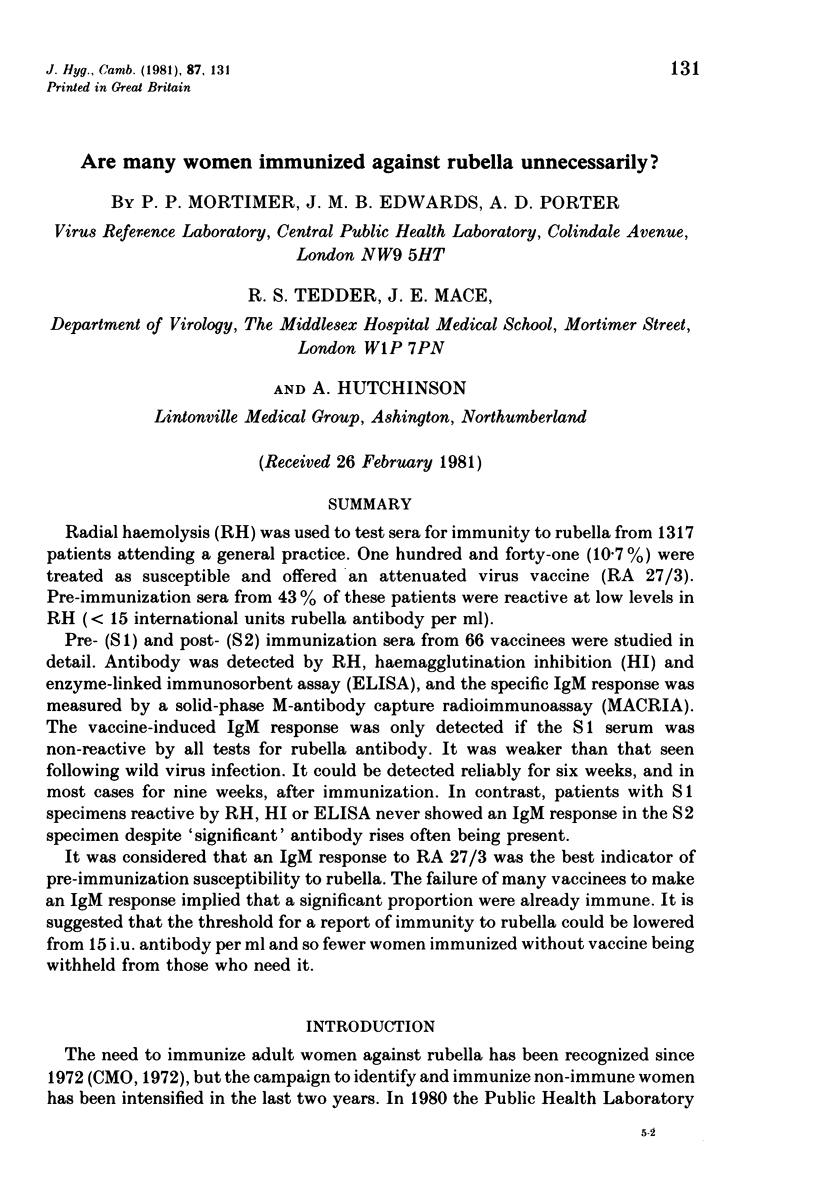
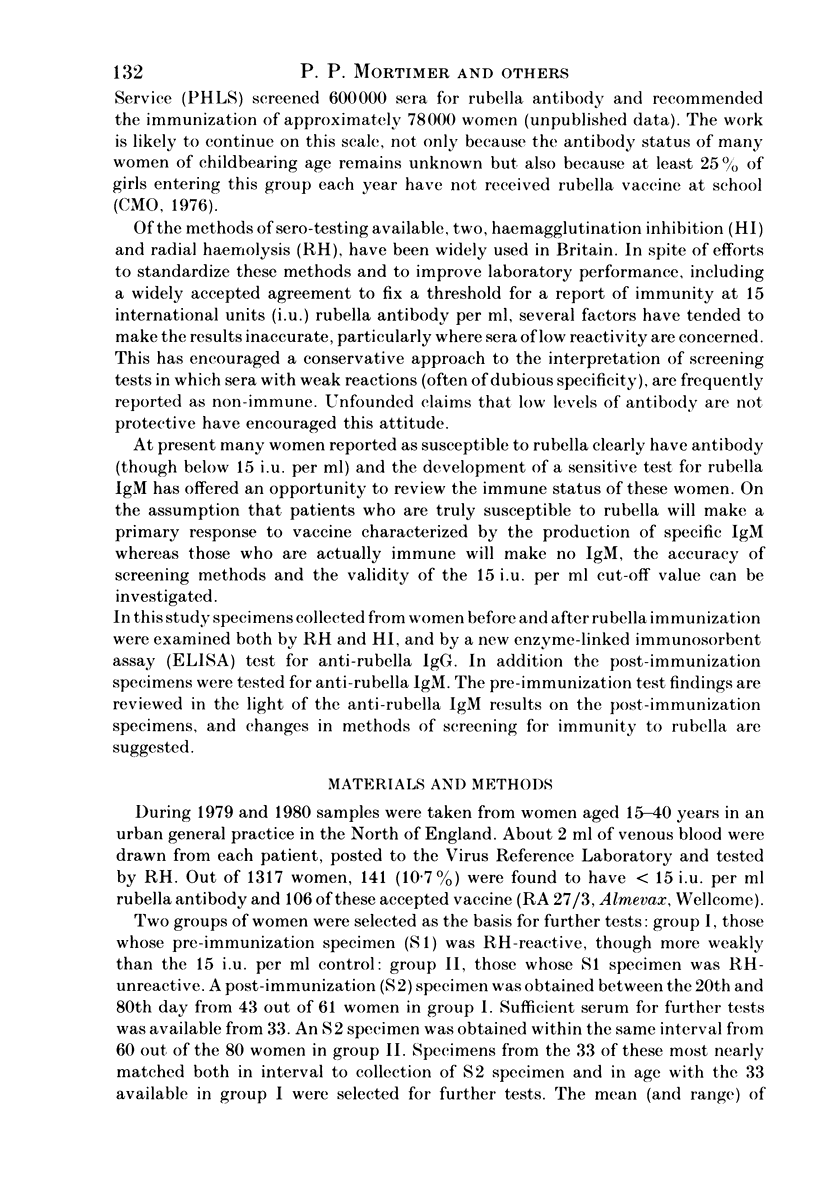
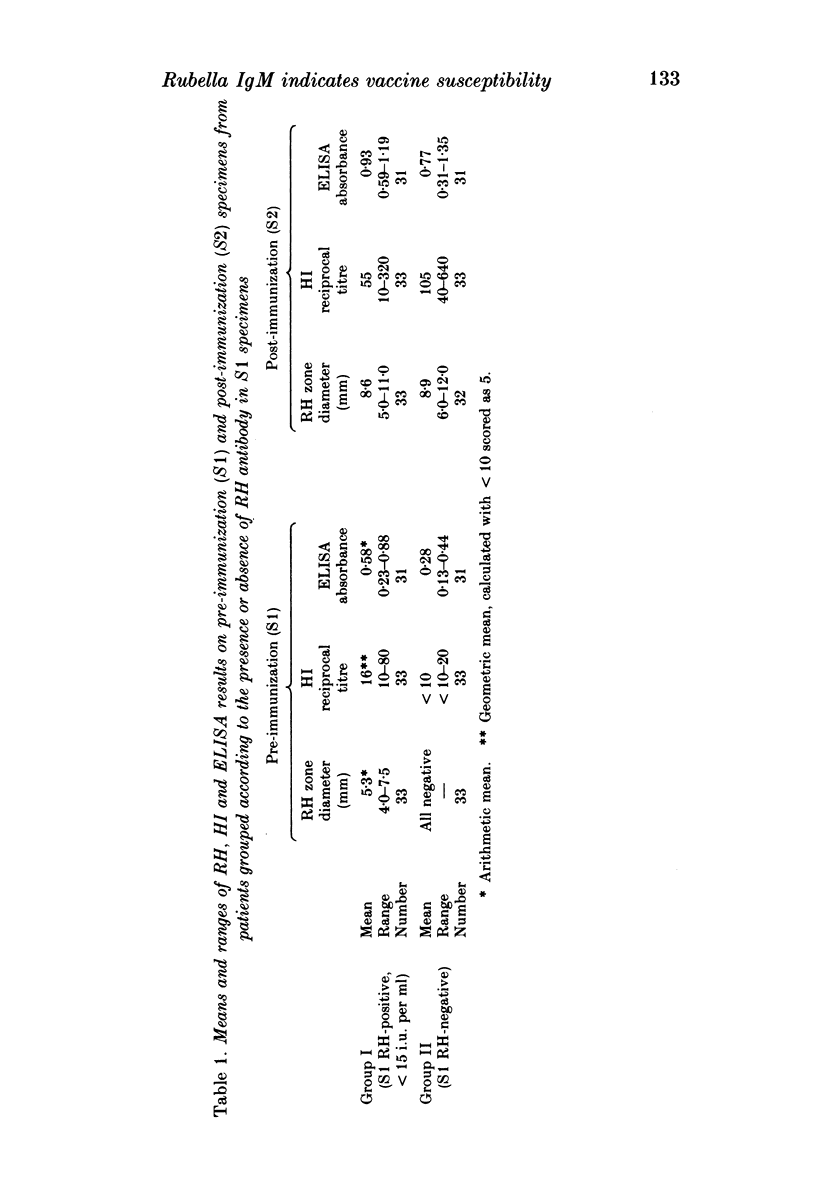
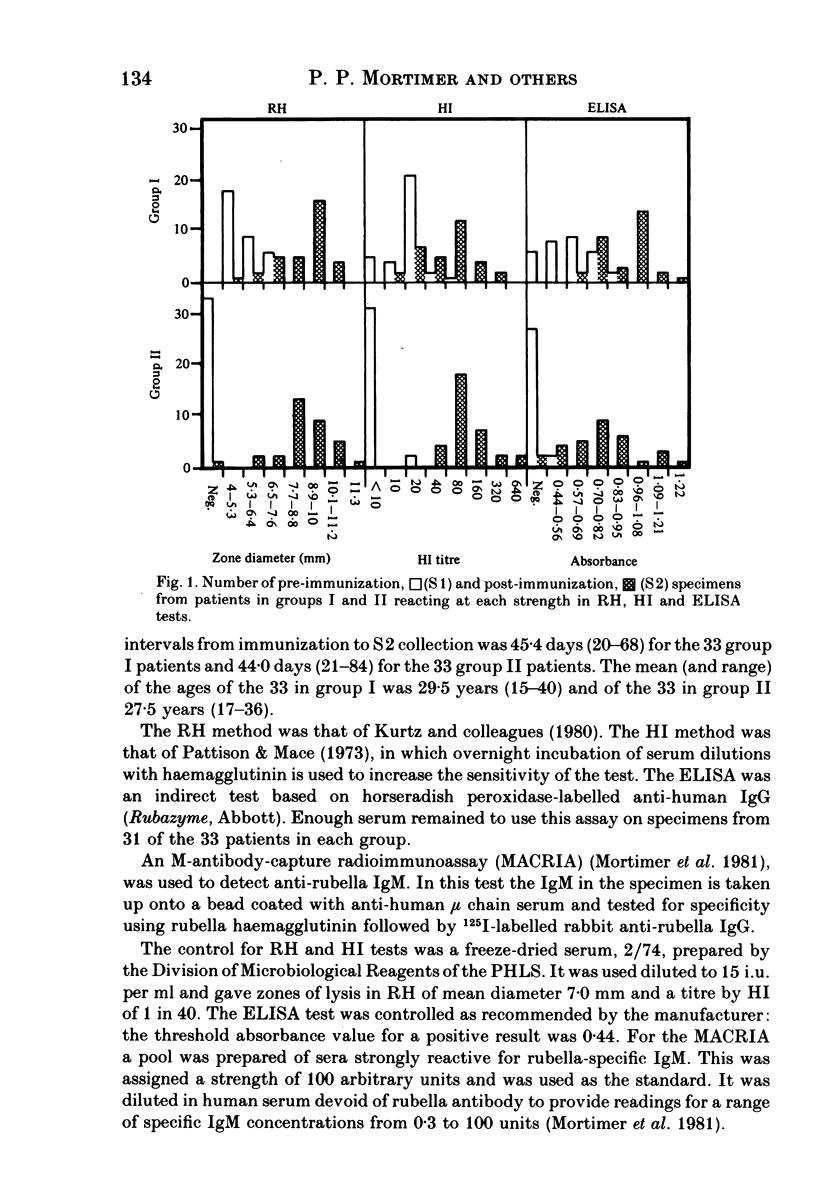
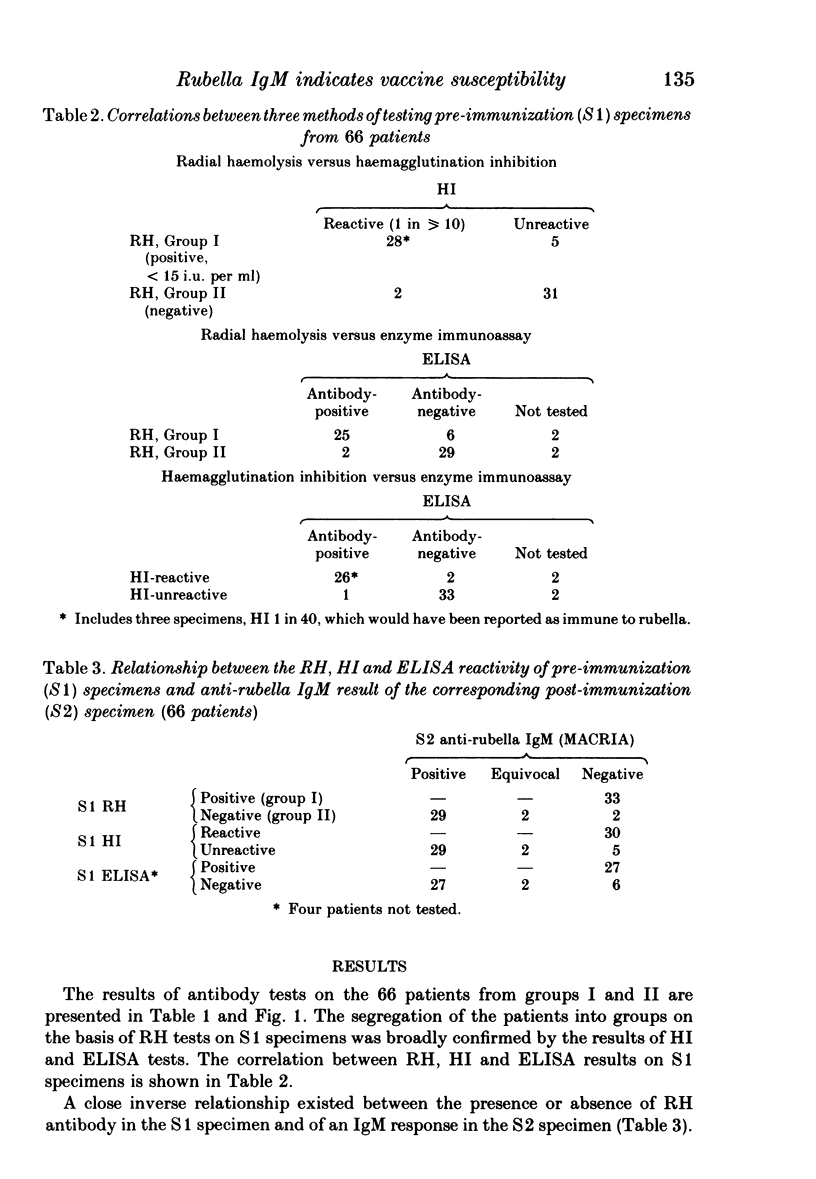
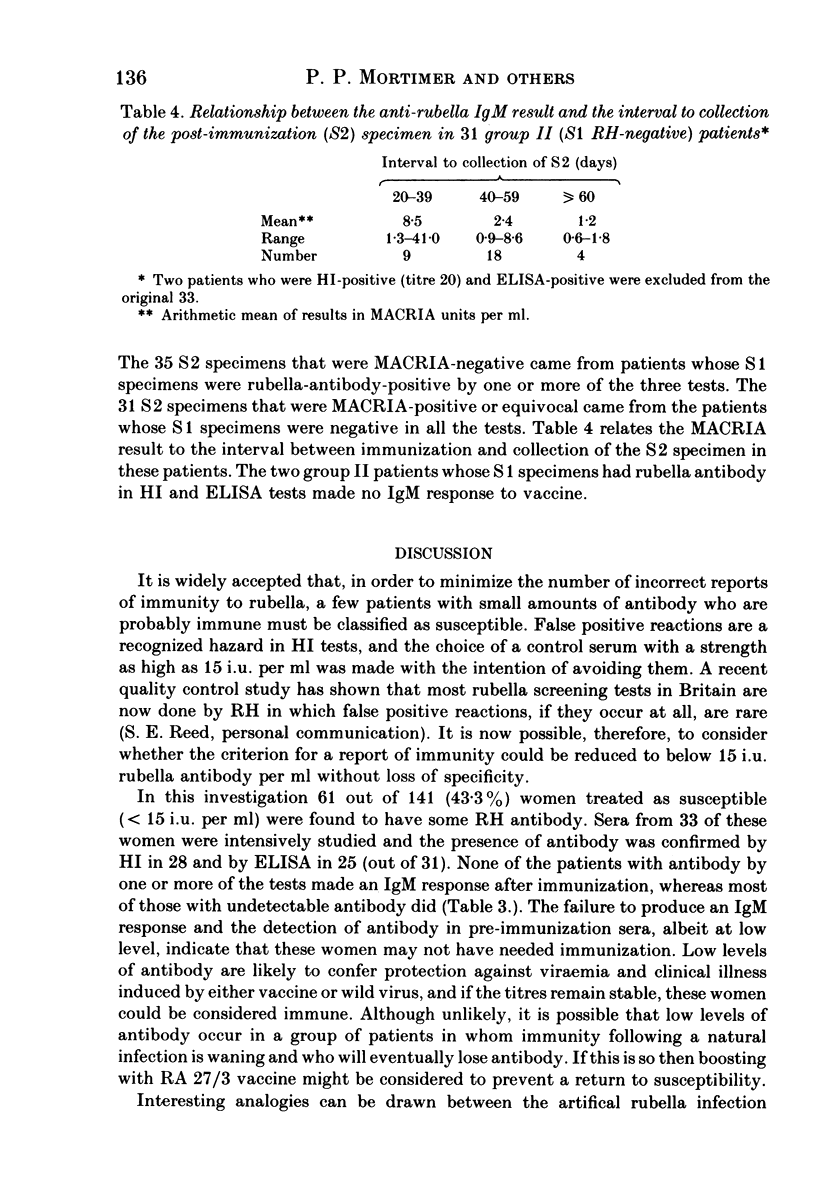
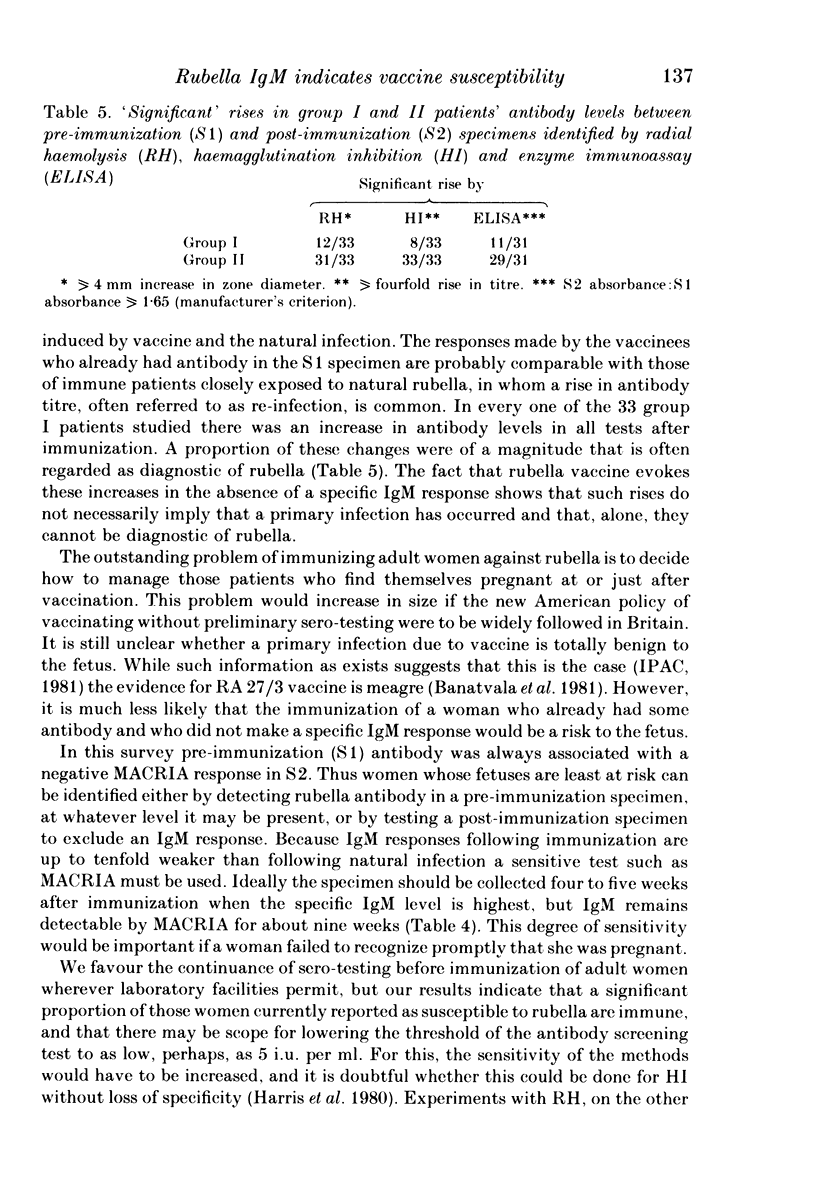
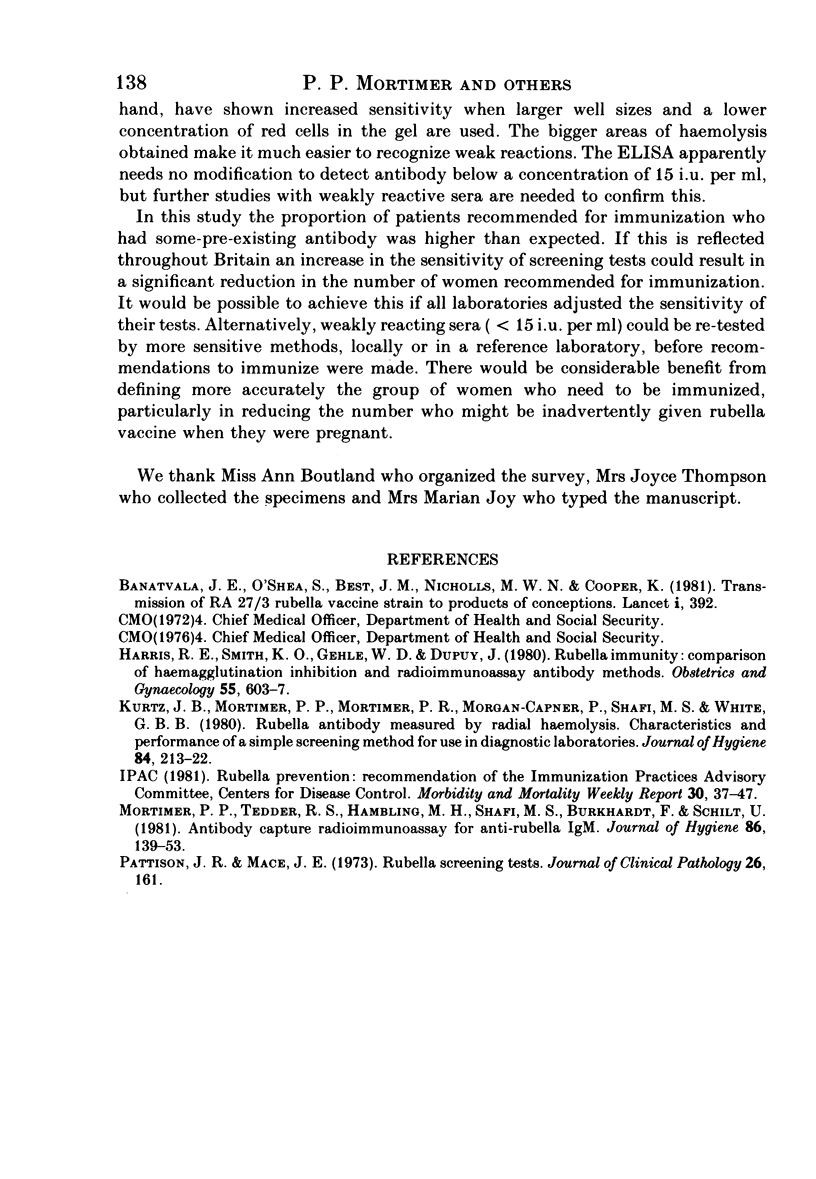
Selected References
These references are in PubMed. This may not be the complete list of references from this article.
- Banatwala J. E., O'Shea S., Best J. M., Nicholls M. V., Cooper K. Transmission of RA27/3 rubella vaccine strain to products of conception. Lancet. 1981 Feb 14;1(8216):392–392. doi: 10.1016/s0140-6736(81)91718-9. [DOI] [PubMed] [Google Scholar]
- Centers for Disease Control (CDC) Rubella prevention. MMWR Morb Mortal Wkly Rep. 1981 Feb;30(4):37-42, 47. [PubMed] [Google Scholar]
- Harris R. E., Smith K. O., Gehle W. D., Dupuy H. J. Rubella immunity: comparison of hemagglutination inhibition and radioimmunoassay antibody methods. Obstet Gynecol. 1980 May;55(5):603–607. [PubMed] [Google Scholar]
- Kurtz J. B., Mortimer P. P., Mortimer P. R., Morgan-Capner P., Shafi M. S., White G. B. Rubella antibody measured by radial haemolysis. Characteristics and performance of a simple screening method for use in diagnostic laboratories. J Hyg (Lond) 1980 Apr;84(2):213–222. doi: 10.1017/s0022172400026711. [DOI] [PMC free article] [PubMed] [Google Scholar]
- Mortimer P. P., Tedder R. S., Hamblig M. H., Shafi M. S., Burkhardt F., Schilt U. Antibody capture radioimmunoassay for anti-rubella IgM. J Hyg (Lond) 1981 Apr;86(2):139–153. doi: 10.1017/s0022172400068856. [DOI] [PMC free article] [PubMed] [Google Scholar]
- Pattison J. R., Mace J. E. Rubella screening tests. J Clin Pathol. 1973 Feb;26(2):161–162. doi: 10.1136/jcp.26.2.161. [DOI] [PMC free article] [PubMed] [Google Scholar]


